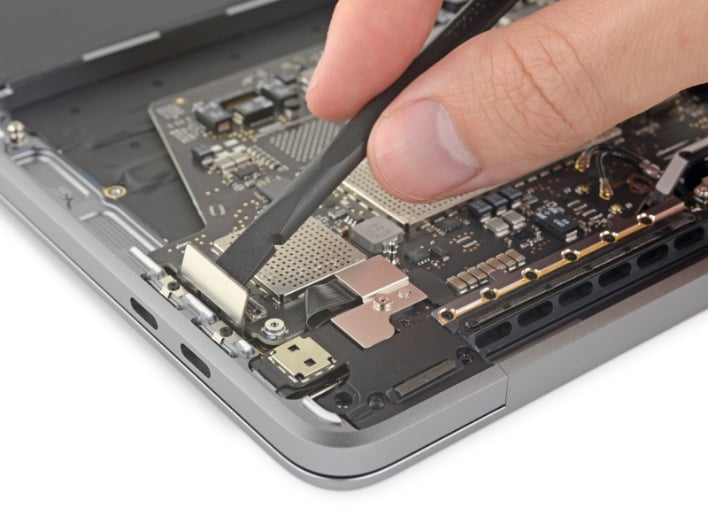Apple’s Base 2019 MacBook Pro Teardown Reveals Bigger Battery, Worse Upgradability
Externally, the biggest change is the arrival of the Touch Bar, which means that the entire MacBook Pro family now includes the touch-sensitive OLED panel. Internally, the Touch Bar is driven by the T2 security chip. Apple also increased the size of the battery ever so slightly, rising from 54.5 WHr on the previous generation 13-inch MacBook Pro (without Touch Bar) to 58.2 WHr.
iFixit express a little bit of concern over the fact that the heatpipe is actually a little smaller in size compared to its predecessor, while the 15W TDP remains the same for its new 8th generation Core i5 processor. Another move backwards is the fact that the previous entry-level 13-inch MacBook Pro featured a modular SSD that could be replaced by the end-user (i.e. you could install a third-party SSD if you wished). This time around, however, Apple has soldered the SSD onto the logic board making future upgrades impossible.
There are some additional positives though for components that could wear out or become damaged over time. The two Thunderbolt 3 ports are mounted onto a modular breakout board, which makes it easy to replace in the event of failure. Likewise, there’s another modular board that incorporates the Touch ID connections, the microphone and the headphone jack. By having these components mounted separately from the logic board, expect future repairs to be cheaper.
As for the controversial butterfly keyboard, it is now in its third-generation – or more accurately,generation 3.5. Apple is using a new blend of plastic to make the key switch more durable.
While all of the updates in the MacBook Pro have not resulted in a price increase compared to its predecessor, iFixit still gives it one of the worst repairability scores with a rating of 2 out of a maximum 10.



